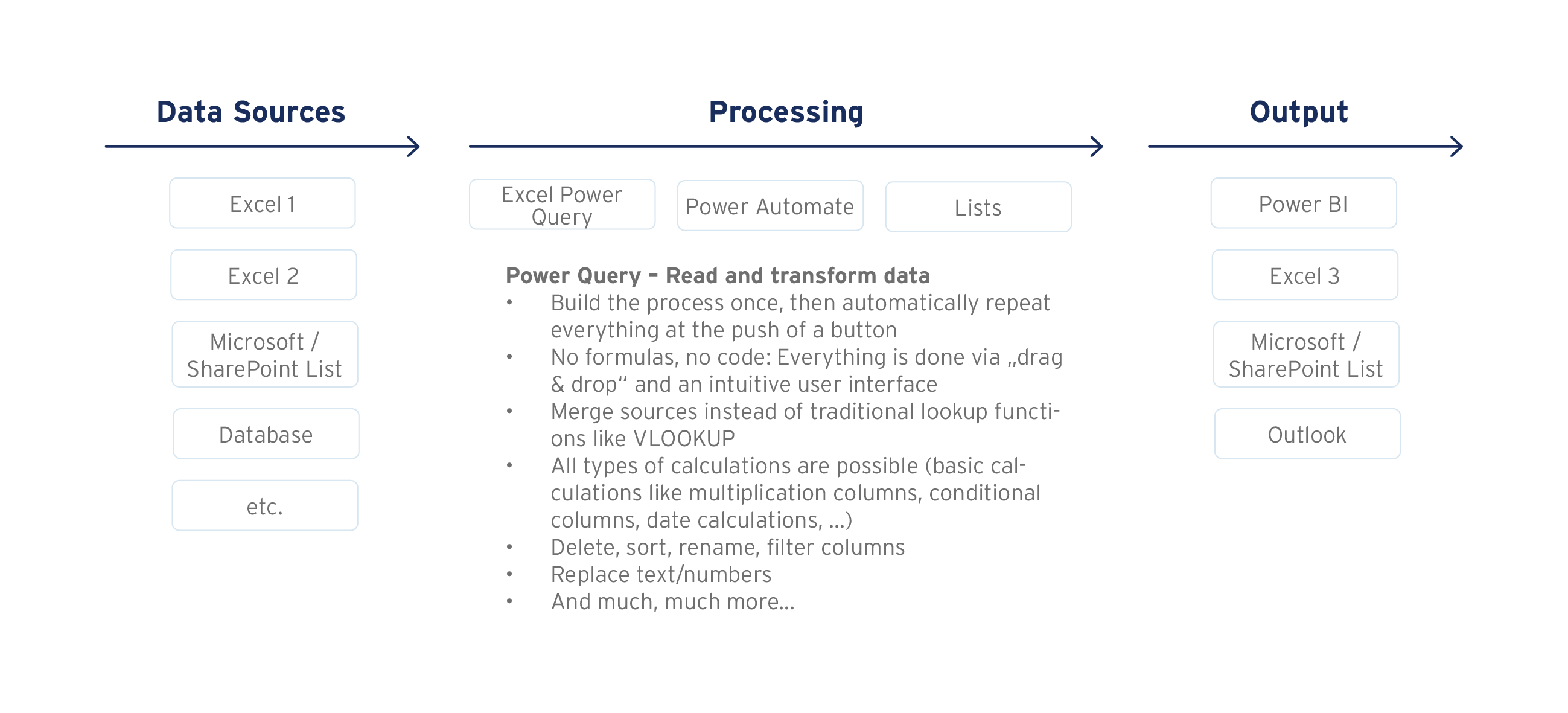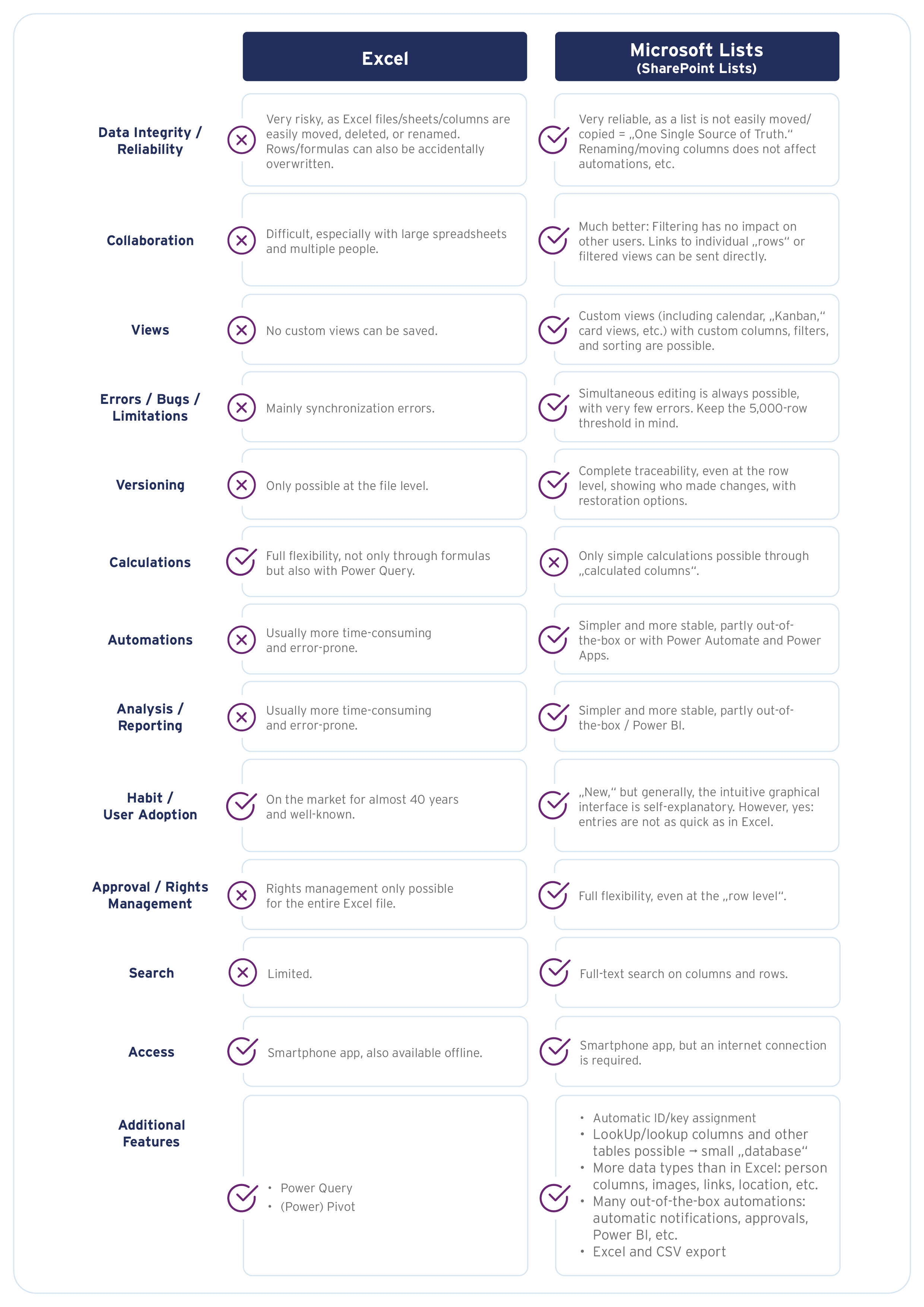Data as Pawns, AI as the Queen
Data Analysis Tools as a Strategic Move for Digital Transformation

In an increasingly digital world, data has become the indispensable backbone of modern businesses. It provides the foundation for informed decision-making and drives efficiency across all areas of business. However, data alone is not enough. The right tools and methods are needed to effectively collect, manage, and analyze this data. This is where data analysis tools come into play, helping companies successfully navigate the digital transformation.

Marcus Machon
In an increasingly digital world, data has become the indispensable backbone of modern businesses. It provides the foundation for informed decision-making and drives efficiency across all areas of business. However, data alone is not enough. The right tools and methods are needed to effectively collect, manage, and analyze this data. This is where data analysis tools come into play, helping companies successfully navigate the digital transformation.In this interview, we speak with Marcus Machon, an expert in Microsoft 365 and Citizen Development. Marcus explains the critical role of data and the challenges that companies typically face in data collection and management. He provides insights into the practical use of Excel and Power BI, as well as the impact of artificial intelligence on data analysis and processing.
A few numbers and data to start with:
- A study by Wavestone (2023) revealed that in 2022, 87.8% of the 116 companies surveyed increased their investments in data (and analytics).
- The same study shows that 91.9% of companies in 2023 achieved measurable value from these investments (Wavestone 2023)
- By 2025, it is expected that data-driven companies integrating advanced technologies and data analytics will be significantly more competitive (McKinsey & Company 2022).
Marcus, what role do data play in the modern business landscape?
Marcus: Subjectively, the importance of data has continued to increase, which is no great surprise. This is one of the reasons why we, as the Citizen Development team, are often called in by clients. Initially, it may be about data collection, data cleansing, and automation. Based on this processed data, very important and significant business decisions are made. If the data is flawed, it can lead to poor decisions and potentially result in damages worth millions.Thanks to tools like Power BI, we can now perform better analyses and identify discrepancies from the previous year or month, as well as recognize certain trends and correlations. Data is, therefore, the backbone of modern companies because it allows us to make decisions based on facts rather than assumptions.
As a Citizen Developer, I see daily how data helps us optimize processes, better understand customer needs, and ultimately work more cost-effectively.This is not a new insight, but the journey to becoming a data-driven company is extremely long and exhausting. Simply having a few Power BI licenses and training sessions is far from enough! All stakeholders – from the employee entering data to the management making smart decisions based on reports – need to work closely together for years, like gears in a machine. Otherwise, I have often seen „pretty“ Power BI reports quickly fall by the wayside.
What challenges do companies typically face with data collection and management?
Marcus: As a „Citizen Developer,“ the hardest part is usually figuring out which raw data you need and where to get it. This is much more difficult than expected and often requires many, many meetings. In many companies, there are some old IT systems with relevant data, but sometimes not all the necessary information is available in those systems. Or, the data is not always up-to-date because departments only update it irregularly. Additionally, there are often no interfaces available to automatically pull the data into Microsoft 365 apps like Power BI, Excel, or Power Automate. Setting up an interface for this can also be far too complex.

Figure 1: Typical (Data) Processes (own representation)
As a result, sooner or later, you often end up back with manually maintained Excel sheets. Often, a combination of regular manual Excel or CSV exports and data cleansing in the manually maintained Excel file is needed. This process has to be discussed and established first to ensure that it works regularly and without errors. The remaining steps, such as data visualization or sending the final data, are usually much easier and quicker.
Excel is often seen as an outdated data tool, yet it remains central for many Citizen Developers. How do you view the role of Excel, especially in your daily work?
Marcus: Excel is still an indispensable tool for me, primarily due to its flexibility and widespread use. It holds a key place in my daily work. As I mentioned earlier, the main reason is that I often receive data from pre-processes or other departments in the form of Excel files. Manually processing this data can be time-consuming and error-prone, even when using Power Query. Power Query, an add-in integrated into Excel since 2013, enables the automated reading and processing of various data sources.I strongly recommend anyone who regularly works with Excel data to familiarize themselves with Power Query. Many colleagues have told me, „Thank you for showing me this! I wish I had known about it years ago!“
Despite its challenges, I believe Excel will continue to play an important role in businesses in the coming years. This is true even as more data is accessed via Application Programming Interfaces (APIs), IT system interfaces, or Microsoft Lists.
Microsoft Lists already offers a better alternative to Excel in many areas, providing seamless integration and improved collaboration. However, Excel remains unmatched for quick analyses and prototyping. It allows users to immediately see and adjust results. While I hope the use of interfaces and automated processes continues to grow, Excel will remain a central tool in my work and that of many others.

Figure 2: Comparison of Excel vs. Microsoft Lists (own representation)
What measures or resources would help you—and others—further improve your datahandling skills?
Marcus: To improve data-handling skills, several key measures and resources are necessary. As mentioned before, many companies lack „clean“ and up-to-date raw data. In my opinion, this has several causes:
- Company Culture: If the value and importance of clean data are not understood within the company, especially by leadership and employees, data often remains outdated and incomplete, even when appropriate IT systems are in place. It is therefore crucial to foster a company culture that recognizes the value of data and prioritizes its upkeep. This requires training and awareness-raising to increase understanding. A certain degree of control is also necessary, even if it is something people may not want to hear. Companies should consider establishing a central role responsible for IT architecture, digitalization, automation, and data operations.
- Modern Infrastructure, IT Systems, Interfaces, and Tools: Often, there is a lack of modern IT systems with suitable interfaces to automate data extraction. Otherwise, data is frequently handled through „data silos“ and/or manual Excel or CSV exports as interfaces. The implementation of modern IT systems would significantly ease the process of data collection and management, improving data accuracy. Investments in these technologies and the appropriate infrastructure are essential. In some cases, certain apps or interfaces are unavailable, forcing teams to rely on cumbersome and error-prone workarounds. This issue is sometimes less about third-party apps and compliance concerns and more about the costs associated with paid Microsoft tools. While costs may be a concern, the additional expenses often pay off faster than spending days or weeks on error-prone workarounds.
- Data Literacy: All employees should have a certain level of data literacy, meaning they should understand and apply basic principles of data processing. When employees work with Excel in business processes, they should follow specific guidelines, such as using actual Excel tables instead of lists, understanding the importance of a primary key, avoiding separator columns and rows, not relying solely on colors to mark data, and consistently using clear column headers. Additionally, in many cases, Microsoft Lists is a better tool than Excel for these purposes.
Tailored training and resources that convey these skills are therefore very important. For employees in data-intensive areas such as HR, marketing, sales, finance, and controlling, training programs focusing on advanced data analysis techniques and tools are essential. This does not mean that all employees need to be able to independently build Power BI reports. However, at least one person on the team should have a deeper understanding of data processing and act as the first point of contact. Additionally, all employees should regularly be made aware of the importance of data, and managers, in particular, should take this topic seriously and demand accountability from their teams.
Another key factor is networking and collaboration with other data experts. Exchanging ideas both within and outside the company can provide valuable insights and new perspectives. Professional groups and communities are great platforms for sharing knowledge and experiences. Mentoring and coaching by experienced professionals can also be extremely helpful. Regular feedback and support from mentors foster the individual learning process and help develop skills in a targeted manner.
Finally, the practical application of what has been learned is crucial. Opportunities to apply knowledge in real projects are essential for gaining practical experience. Developing and executing your own data projects deepens understanding and strengthens data-handling skills. These measures and resources would not only help me but also others to continuously improve our data-handling abilities.
Is artificial intelligence already a topic for you, especially regarding data analysis and data processing?
Marcus: First of all, I‘m not a true AI expert, just an enthusiastic AI user and enthusiast who reads almost all the news about AI on a daily basis. But no, AI is not yet a major topic in terms of our data analysis and processing in our day-to-day work. Of course, expectations for AI are huge, and I notice some disappointment that AI cannot magically solve everything on its own. However, we do use AI in certain areas, and it is definitely a supportive tool in our daily work.
For example, I use AI almost daily to develop solutions and code with the help of ChatGPT, which I can then implement in Power BI or other applications. Another example is the structured collection of customer feedback at the end of a project. Power BI can perform a sentiment analysis on free-text feedback and assess whether the responses are more positive, neutral, or negative. This is helpful for quickly gaining an overview of customer sentiment. Microsoft‘s Copilot also supports us in creating simple workflows. Additionally, I work with Microsoft Sales Copilot, where an AI assistant can access data in the CRM system and suggest suitable products based on customer information. Unfortunately, CRM system data is often not well-maintained, so the Copilot‘s usefulness is limited. This clearly shows that companies need to rethink their approach and recognize the importance of data.
It is clear that AI has enormous potential, and we expect it to play a bigger role in data analysis and processing in the near future. Until then, we are using the tools we have and remain open to new technologies that can further improve our work.
Keyword Future: How do you see the future of data analysis and the use of AI in the corporate context?
Marcus: As mentioned earlier, AI will definitely have a major impact on data analysis in the coming years and will revolutionize it. For example, I have seen a demo from Microsoft where an end-user could generate a complete Power BI report simply by using prompts. AI will also help identify patterns and trends that are difficult for humans to detect and will enable predictive analytics to support informed decision-making.
However, this progress will only be possible if the foundation is right: clean, up-to-date, complete, and well-structured data. Many people expect AI to magically solve all problems — that will definitely not be the case. For AI to work properly, it requires well-structured and complete data. This is precisely where many companies still have significant catching up to do.
As long as the data is not up-to-date and well-structured, one cannot expect real value from artificial intelligence. That is why I recommend that every company focus intensively on topics such as IT architecture, data modeling, data literacy, interfaces, as well as the timeliness and completeness of data. Companies that invest in these areas now and improve their data infrastructure will be able to successfully navigate the upcoming AI disruption, benefit from the advantages of AI, and secure competitive advantages. It is not just about implementing AI tools but also about optimizing the entire data strategy of the company. Only in this way can we ensure that we are ready for the future of data analysis.
Thank you very much for these exciting insights!
Literature
McKinsey & Company (2022). The Data-Driven Enterprise of 2025. https://www.mckinsey.com/capabilities/quantumblack/our-insights/the-data-driven-enterprise-of-2025 [retrieved on July 30th, 2024].
Wavestone (2023). Design 2023 Data & Analytics Survey Report. https://wwa.wavestone.com/app/uploads/2023/10/Design-2023-Data-Analytics-Survey-Report.pdf [retrieved on July 30th, 2024].